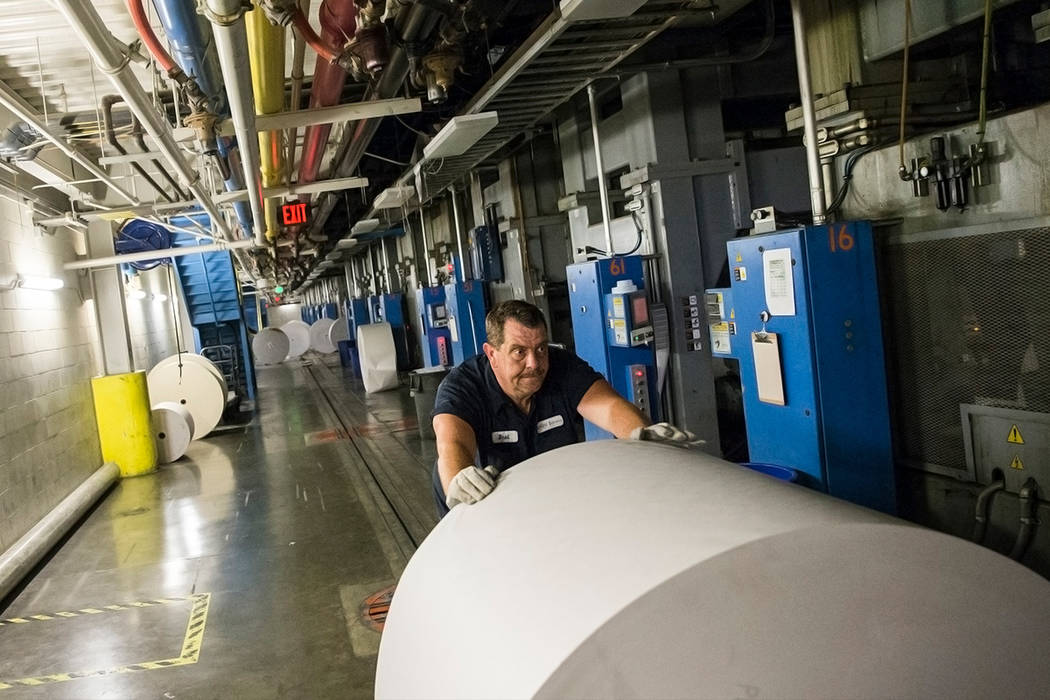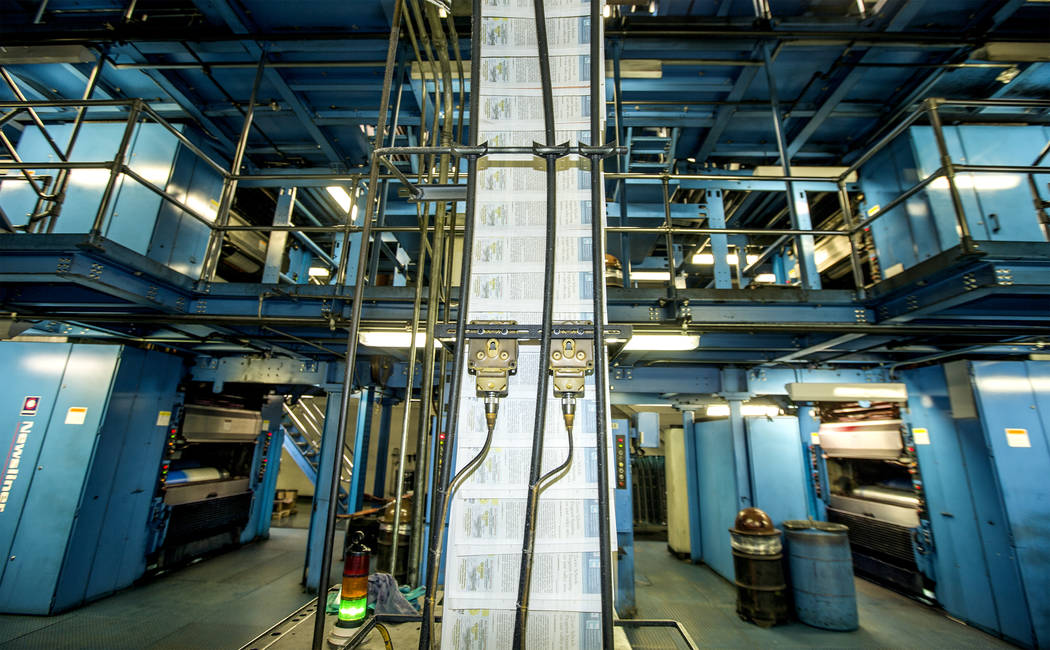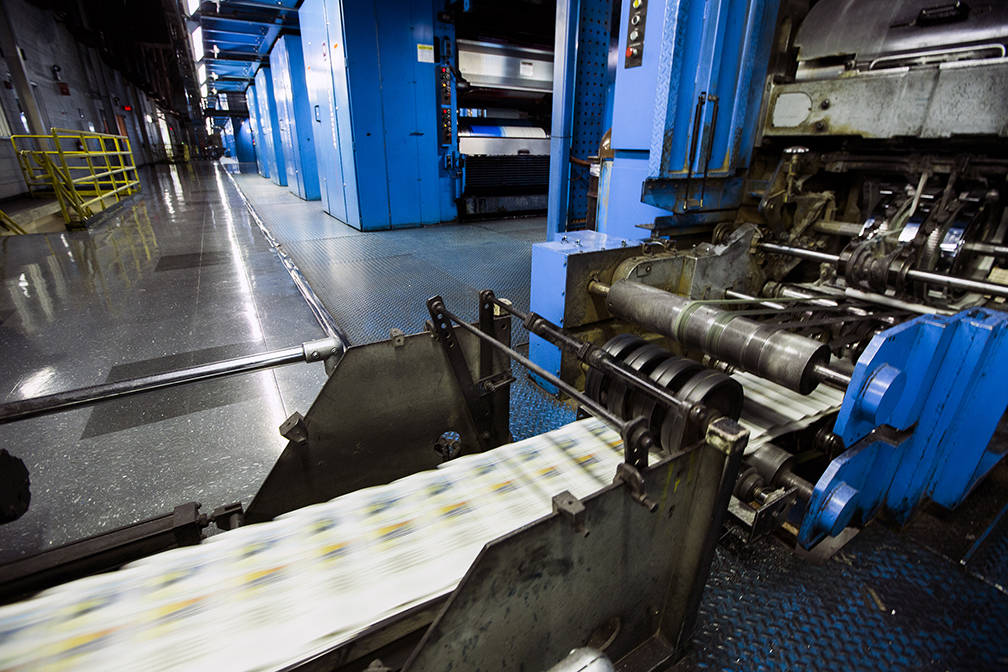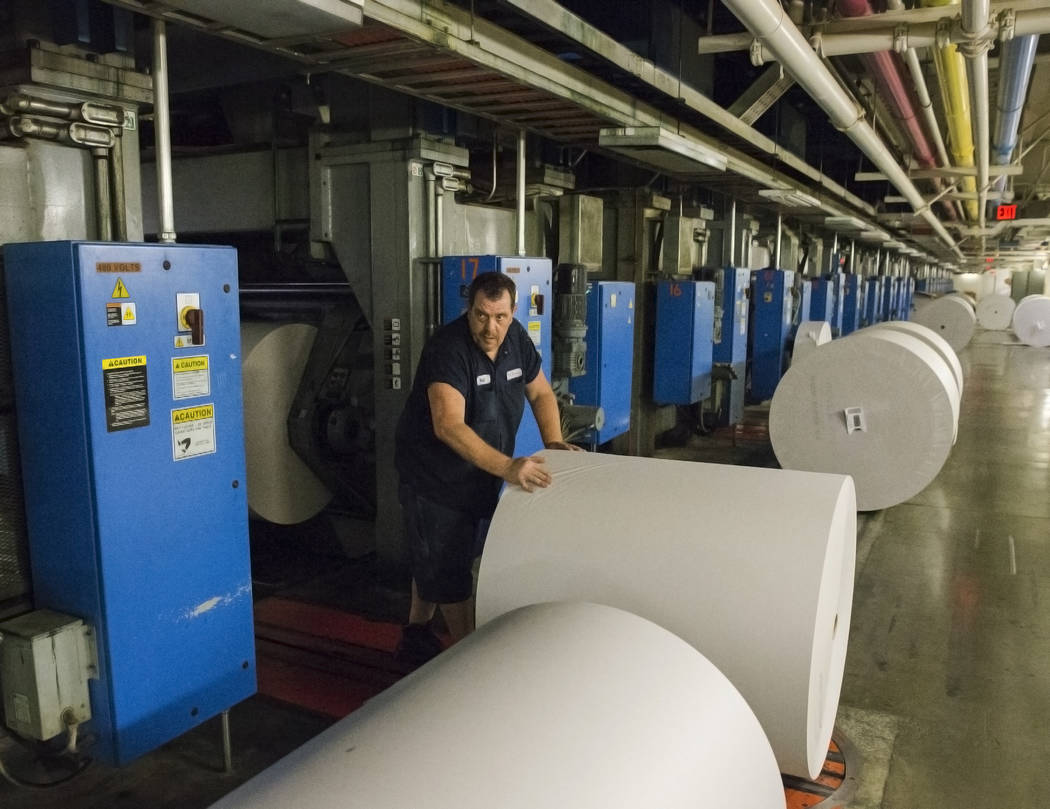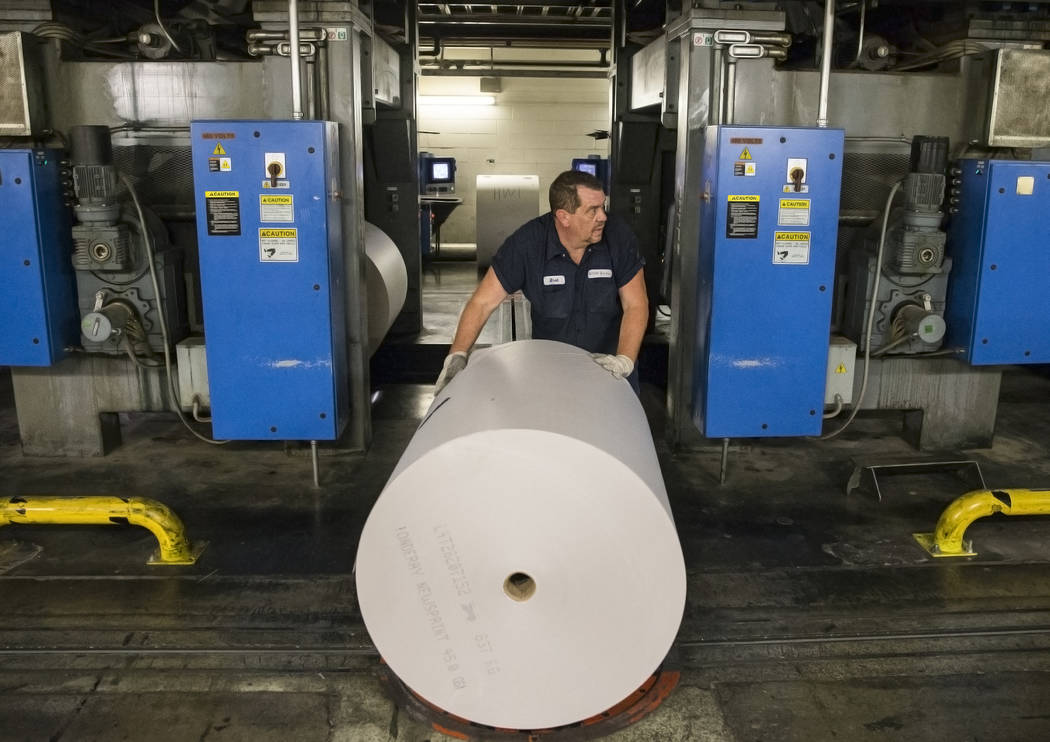Tariffs and supply disruptions threaten US newspapers
Newspapers across the country could be thinner or even disappear in the near future as news executives nationwide wrestle with disruptions in paper supplies and new tariffs on newsprint.
Tariffs as high as 32 percent have been placed on imported newsprint from Canadian paper mills as the U.S. Commerce Department and the International Trade Commission investigate complaints of unfair trade practices leveled against Canadian suppliers by a Washington state-based paper company.
Tariffs have driven up the cost of newsprint, a commodity that already has seen prices increase over the years because of high demand and low supply. Newsprint is generally the second-highest cost for newspapers after payroll.
The problem is an additional frustration for the Las Vegas Review-Journal because its traditional newsprint supply rail route has been disrupted by Project Neon’s freeway improvements.
“Ensuring we have an adequate supply of newsprint is a day-to-day proposition,” Review-Journal Vice President for Production Janet Owen said Wednesday.
“We have been managing with limited newsprint reserves for about six months, and we don’t anticipate any improvement this year. The Review-Journal is doing everything possible to secure newsprint deliveries.”
Newsprint surcharges
In Northern Nevada, the 65 commercial printing accounts of PressWorks Ink in Carson City received an email from General Manager Chris Johnston on Wednesday announcing they would be assessed a newsprint surcharge on their orders because of the tariffs.
The surcharges vary depending on the size of the jobs, but Johnston said his company believes the pass-through costs are the fairest way to address the increase.
“They didn’t budget for this price increase, and it’s affecting everybody,” Johnston said.
He said he has seen fluctuations in the newsprint supply chain because orders for paper that once took two to three weeks now take four to six weeks to fulfill because of increased demand.
Some of his colleagues, he said, are buying paper from American producers to dodge the tariff charges despite higher domestic prices resulting from high demand.
Rural newspaper crisis
Paul Boyle, senior vice president of public policy for the News Media Alliance, an Arlington, Virginia-based trade association representing about 2,000 newspapers in the United States and Canada, said the disruption is having a devastating impact on newspapers across the country, including some in rural areas that are on the verge of ceasing publication.
Boyle said the Commerce Department is scheduled to conclude its investigation and make a determination on tariffs by Aug. 2.
Meanwhile, the International Trade Commission is expected to conduct a hearing July 17 and issue its findings in September, Boyle said.
“Countervailing and anti-dumping duties have been used and enforced by the government to protect U.S. industries and U.S. jobs, but with this petition for tariffs on newsprint, it’s actually going to have the opposite impact,” Boyle said. “Newspapers are facing considerable headwinds. We’re already seeing the impacts of these tariffs with newsprint prices going up 30 percent, and in some cases small newspapers are having a hard time actually finding supply because the market is completely disrupted.”
Newsprint supply problems began years ago as newspaper circulation declined and many publications shifted to digital formats, reduced the size of their publications or stopped printing on some days of the week.
To survive, many U.S. paper producers closed mills, reduced operations and began selling more newsprint to thriving markets in China, Russia and Europe.
Small mill’s complaint
Recently, a small mill in Longview, Washington, North Pacific Paper Corp., owned by hedge fund One Rock Capital Partners, complained that Canadian mills were competing unfairly with U.S. producers by operating with federal loan subsidies and harvesting trees on government land.
One Rock’s website said the New York-based hedge fund focuses on “underoptimized” companies, those that don’t make as much money as they potentially could. Working with a strategic partner, Japan’s giant Mitsubishi Corp., the fund is invested in fast food outlets, consumer appliances and chemical companies. It acquired North Pacific Paper in 2016.
While the Commerce Department investigates North Pacific’s complaints, temporary tariffs from 6.5 percent to 10 percent have been levied with collections going to an escrow account until the investigation is complete. This month, an additional 22 percent tariff was assessed because of a new allegation that Canadian mills were underpricing their product.
Though the tariffs are only temporary, American mills, which on average are running at about 97 percent of capacity, have raised their prices as demand goes up. Industry leaders fear newspapers might have to increase advertising rates and costs to consumers or cut staffs to keep up with the higher prices.
Ad revenue key
While displaying news exclusively online is an option for news organizations, print advertising is the primary generator of revenue for most newspapers and is essential to keeping the newsgathering side strong.
“It’s very possible that inadequate newsprint reserves will affect the page counts of the Review-Journal and perhaps that of our partner in the joint-operating agreement, the Las Vegas Sun,” Review-Journal Publisher and Editor Keith Moyer said Wednesday. “We’ll do everything possible to keep popular features in the print edition every day, and if we have to cut some content, we’ll publish the newspaper in full for our e-Edition.”
The Review-Journal’s e-Edition is a digital version of the print edition that allows readers to scroll pages and read each article with a tap or a mouse click on the story. It is available at no charge to all print subscribers.
Print subscribers who have not registered for the e-Edition can do so by going to the bottom of the Review-Journal’s home page, www.reviewjournal.com, and clicking on the e-Edition link at the bottom left. Additional pages of coverage will be added to the e-Edition if they have to be cut because of inadequate newsprint supplies, Moyer said.
STOPP campaign
Boyle said the News Media Alliance is coordinating an education campaign about newsprint tariffs and how they are affecting local communities. The organization is encouraging the public to contact representatives in Congress through its new website, stopnewsprinttariffs.org.
The organization’s STOPP campaign — for Stop Tariffs on Printers and Publishers — says tariffs threaten an estimated 600,000 jobs across the U.S. printing and publishing industry.
Contact Richard N. Velotta at rvelotta@reviewjournal.com or 702-477-3893. Follow @RickVelotta on Twitter.
Newsprint by the numbers
— Each roll of newsprint weighs just under 1 metric ton, about 2,200 pounds.
— Each roll prints 32,000 copies of four pages across, or eight total using both sides of the roll.
— If unrolled, a roll of paper would stretch just over 11 miles — about the distance from the Fremont Street Experience at Las Vegas Boulevard to Interstate 215 near Town Square Las Vegas.
— The Review-Journal uses about 150 rolls per week for the daily publication and to print El Tiempo, Auto Magazine, Neon and the company's affiliated weekly newspapers in Pahrump and Boulder City.
— Newsprint rolls arrive by rail car directly to the Review-Journal building, which can accommodate the content of five rail cars holding between 72 and 87 rolls each. It takes about three days to use all the paper in a full rail car.
— During the $1 billion Project Neon highway construction project, rail cars headed to the Review-Journal have been diverted to another site for off-loading, and the paper is transferred to the building by truck.
Source: Janet Owen, Las Vegas Review-Journal



